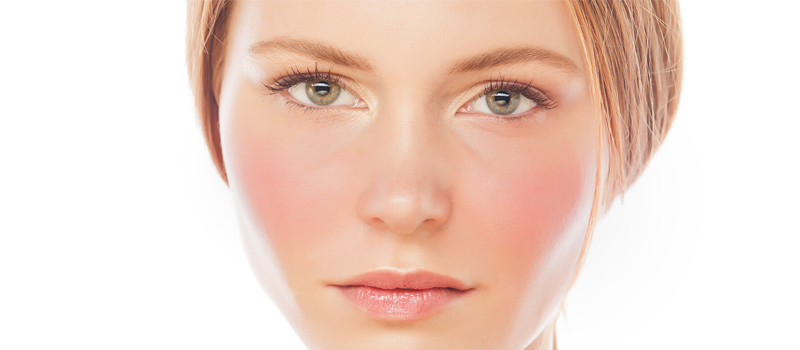Having rosy cheeks has been considered a most attractive trait for centuries, if you don’t count that time when women were so into paleness they literally bled themselves nearly to death. Insane beauty trends of the past aside, having flushed cheeks today is considered pretty and can save you a lot of money on cosmetic blush. However, what if that rosiness isn’t caused by really good blood flow or a bit too rough a touch from the hot Miami sun? Unfortunately, redness on cheeks is sometimes a sign of some skin problem that you need to treat fast so it doesn’t cause any irreversible changes in your looks.
3 Common Causes of Facial Redness and What to Do About Them
1. Sensitivity
Sometimes the redness of your face is a result of sensitivity to, pretty much, everything. People with extremely sensitive skin can react this way to anything from a subtle change in temperature to a new cosmetic product to sunlight to pollen in the air.
All in all, this is probably the most annoying cause of facial redness. However, it’s also one of the least dangerous. You shouldn’t develop any skin conditions that might deal permanent damage if you use specially-formulated products for sensitive skin in your daily beauty routine.
The flushes won’t go away, but you can soothe the mild irritation fast using cooling natural remedies, like cucumber paste or Aloe Vera gel.
2. Rosacea
Rosacea is nowhere near as easy an issue as extreme skin sensitivity. This skin condition affects about 16 million Americans and it’s most prevalent in the Nordic populations, where people commonly have very pale skin.
This skin condition mostly affects your nose and cheeks and it has a severe form. In that case, it can cause swelling as well as turn the affected skin nearly purple. At that stage, the condition might affect the eyes as well, which results in swollen eyelids and conjunctivitis. As it’s a very serious matter, be on alert for bright redness concentrated on and around your nose. “This is a sure sign that you should be booking an appointment with a professional.” Says Dr. Flora A. Mayoral, a dermatologist in Miami. It’s best to check if you really have the condition so you can start your quest of understanding what triggers an outbreak of rosacea in your personal case.
There is no cure for this condition, not even an effective treatment. But luckily, it shouldn’t affect you all the time. In most cases, something pushes your body into overdrive and triggers rosacea. It’s similar to an allergic reaction, but without the actual allergy. You’ll need to monitor your lifestyle and especially diet to determine your personal risk factors.
Once rosacea-induced flush appears on your face, you’ll need to be extra-gentle when washing it and use plenty of soothing solutions, like the Aloe Vera gel mentioned above. In fact, that product is so good for skin, you should always have it on hand, regardless of your own skin type or condition.
3. Acne
Is the redness on your cheeks accompanied by pimples? Sadly, acne is the eighth most common disease in the world and, at some point in life, it affects nearly everyone. According to Dr. Jenny J. Kim from the University of California, acne is similar to a chronic disease. Therefore, it can reappear at any time.
Like rosacea, acne is impossible to cure completely. However, there is a multitude of reasonably effective treatments available. Note that you need to always combine those treatments with a healthy diet because in the majority of cases, acne is either triggered or made worse by digestive issues and consuming junk food and sugar.
Therefore, the first thing you should do to get rid of acne is to remove any inflammation-inducing foods from your diet. The next step is using anti-acne skin care products that fit you personally.
If neither seems to help, consult a dermatologist. This condition might be caused by hormonal disorders or some other health problems, so taking some tests won’t be amiss.
The doctor might prescribe you some antibiotics as well as highly potent topical treatments. But bear in mind that you should have professionals apply them, if it’s recommended. Some of these solutions, like salicylic acid, might do some nasty damage if they aren’t used right.
If your skin redness doesn’t fit any of these scenarios, speak to a dermatologist right away. This might be nothing, but it’s always best to make sure that you are healthy and safe.

